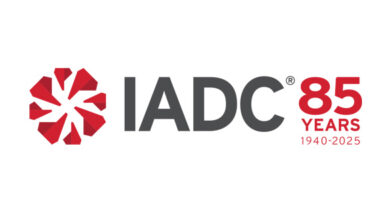Are we laggards in technology adoption?
By Mike Killalea, editor & publisher
We pride ourselves on innovation, but are actually laggards at technology adoption.
“The oil and gas industry tends to have a technology adoption cycle of roughly 30 years from concept to 50% market penetration,” remarked Dustin Torkay, Seadrill, IADC Advanced Rig Technology (ART) Committee vice chairman-Future Technology, adding that this is an eight-year process in the medical industry. Mr Torkay is the driving force behind our 12 June ART Workshop on technology adoption. The afternoon workshop will convene in Barcelona the day before IADC World Drilling 2012.
Tom Bates, Lime Rock Partners, an ART workshop panelist, agrees that the pace of technology adoption is “painfully slow.” Mr Bates should know. His long career prior to joining investment firm Lime Rock as a managing director began with Shell and includes leadership positions at Baker Hughes, Weatherford Enterra and Schlumberger.
“There is almost an order of magnitude difference from other industries,” he said. “It’s a bit of a conundrum, (because) overall, our industry is not risk averse.”
Stagnation Generation
One case in point is stagnation in directional MWD, which, according to sponsors of a new Drilling Engineering Association joint industry project (JIP), has not appreciably advanced in a generation.
Now, before MWD partisans rouse to churn out indignant emails championing their companies’ achievements, let me stress that MWD overall has seen many advances. But, according to the DEA JIP sponsors, the process for directional MWD has barely budged in 30 years.
“The perception is that it’s good enough, because we are able to get to the production target,” said Robert Estes, Baker Hughes, which, along with ConocoPhillips and Bench Tree Group, are current sponsors.
The need for more precise directional MWD is pressing, Mr Estes says. A next-generation MWD tool drilling a relief well could reduce time to intersection and enhance accuracy. For infill drilling amid a spider’s web of directional wells, avoiding collision through pinpoint placement might prevent a blowout. For steam-assisted gravity-drainage wells, more precision can maximize production by optimizing well placement.
The organizers are seeking another seven or so JIP participants, at about $30,000 each. (Click here for more on the JIP.)
Dragging Innovation
The question remains. Why does innovation drag? ART workshop participant Jan Brakel, manager for wells R&D with Shell, suspects that with activity booming, the status quo suits most. “Is there a need to innovate?” he asks, though he himself is a strong proponent of change.
He points out that, rig newbuilding notwithstanding, a plethora of ancient equipment still keeps turning to the right.
“In general, as a drilling industry we have a significant catch-up opportunity in terms of technology,” Mr Brakel said.
Business Units Limit Vision
Mr Bates suggests that innovation began to flag when major oil companies switched to the business unit model.
“Business units are great for giving objectives and giving senior manager accountability for results,” he said.
On the other hand, a business-unit leader’s focus on that narrow bottom line is hardly an incentive to try something new, expensive and with potentially large downside risk.
Independents harbor a more entrepreneurial spirit, Mr Bates noted.
“It wasn’t a supermajor that developed the Barnett, with 25 frac jobs and 15,000-ft laterals,” he pointed out.
A corollary of narrowed vision is a dearth of test sites, he added.
“One of the frustrating things for me,” Mr Bates said, “is the inability to get products in the field and tested. That is a real barrier to progress.”
Mr Bates urges industry to develop a cooperative means to test promising technologies without jeopardizing wells, thereby helping to move technology forward.
“At the end of the day, technology works.”
Mike Killalea can be reached via email at mike.killalea@iadc.org.




